Winter walking in Britain, a glorious activity, or a cold and damp drudge? Which camp do you fall into?
The author of a Guardian article about winter walking in Britain fell into the latter. As a relatively recent returner to yomping across Britain’s countryside, I found it interesting to compare his experiences with mine.
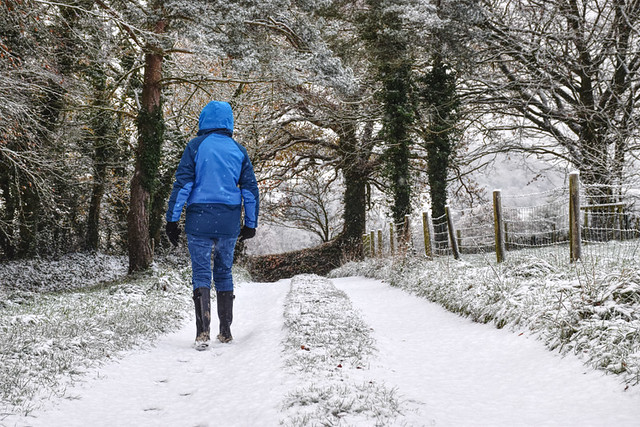
The weather
The weather was one area where hiking in Blighty left him cold. Cold, wet, and miserable.
At this time of year, the lure of warmer climes can be irresistible, whether that’s for lying in or walking in doesn’t really matter. Having lived in places where winter days were rarely what anyone in Britain would call cold, and where rain was an infrequent visitor, I can confirm that warm winter walking is very pleasant.
However, over the last couple of years, I’ve enjoyed winter walking in the UK as much as I did in Portugal, and far more than I did walking in summer in hot climates. In both Tenerife and Portugal, walking was off the agenda during summer months.
The thing about the weather is, you can dress for cold and rainy days. There’s not a lot you can do to keep out the heat. I subscribe to Alfred Wainwright’s assertation “There’s no such thing as bad weather, only unsuitable clothing.”
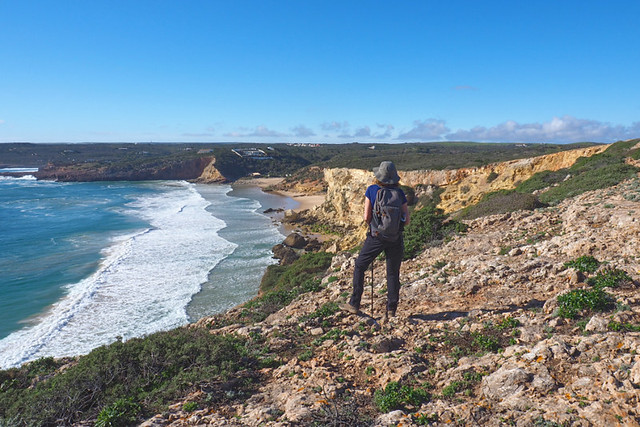
Clothing
I relish being able to wear trousers, fleeces, and jackets we bought for hiking in Chile and Switzerland. They all get regular outings after languishing in cupboards for years. Hiking in the Canaries and Portugal only required light waterproofs at best. Even in snow in Teide National Park, we hiked in T-shirts (although we would start off wearing light fleeces and a jacket – you don’t go hiking at over 2000m without having warm clothing to hand). Various walking forays around Europe tend to be in spring or autumn, again usually only requiring light walking gear, apart from one time in the Black Forest when the weather turned, temperatures plummeted, and we were caught wearing completely inappropriate clothing (see Alfred Wainwright).
Since returning to Britain, we’ve added gaiters and Wellington boots to our outdoor gear collection. I’ve worn wellies on the last two walks we’ve completed. Both were short (under 10km) and didn’t involve any serious ascents or descents, so wellies were fine. Splashing through marshy fields, along muddy farm tracks, and through lake-sized puddles unlocked the inner child, while my feet and legs remained cosy and dry. I’ve also switched from hiking boots with lightweight uppers to leather ones, far better for traipsing through Britain’s squidgy fields. Although we’ve walked across a cold and rainy Exmoor a couple of times, we’ve yet to resort to the tent-sized ponchos we bought to walk the Camino de Santiago.
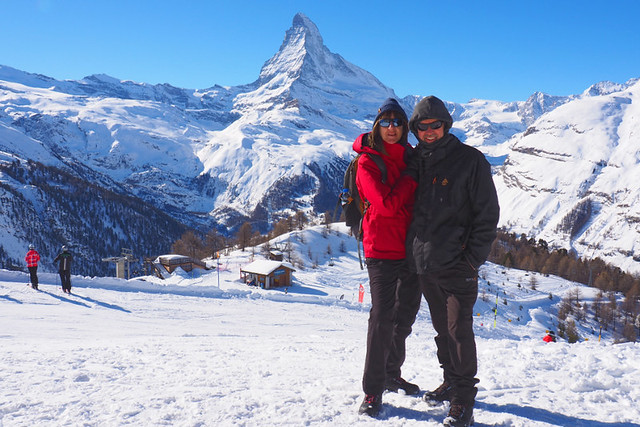
Walking speed
I couldn’t tell you whether we are fast or slow walkers, it’s not something I dwell on. I walk at the pace I walk at. I would guess it’s neither fast nor slow. The Guardian’s writer was a confirmed fast walker, speeding along, head down. I’ve never understood that way of walking. Maybe that’s because of a brief stint in the Marines where walking in that manner was called a route march and involved lugging a 56lb pack on my back. It’s not what I think of as a fun activity. Plus, you aren’t going to see much when you’re motoring along head down. Walking for us is all about learning about our surroundings, registering the contributions and impact of both nature and humans. For me, there is no better way to get under the skin of any destination than to walk it, but that wouldn’t happen if we were racing along.
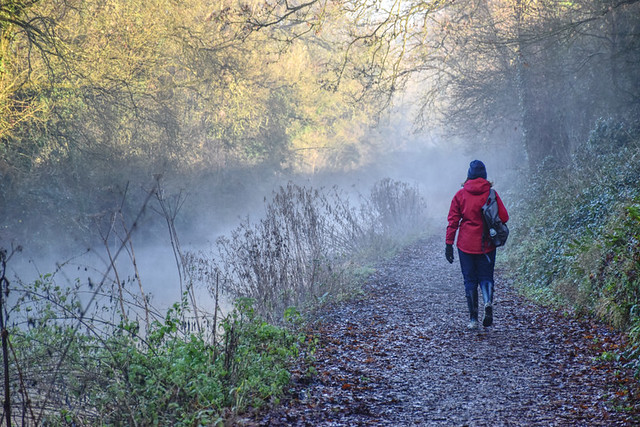
Daylight Hours
One area we had to learn to adjust to was the limitation presented by reduced daylight hours. Thanks to longer days, winter didn’t really affect the length of the walks we did in the Canary Islands or Portugal. We were almost caught out on our first long winter walk in Britain, arriving back at our car just as the daylight was snuffed out. Now we simply stick to shorter routes during the darker months.
Experiences
In a way, scenery in warmer climes doesn’t always change that much. In both Spain and Portugal, the greatest difference in terrain was that by the end of summer, the land looked tinder dry and not particularly attractive in some areas. Generally speaking, that’s not a problem in Britain. Maybe it’s still the honeymoon period, but I’m enchanted by how the countryside transforms with the change of seasons, each one artistically reinventing the landscape. After a lengthy period away, it has been like looking at Britain’s beauty through fresh eyes.
To summarise why winter walking in Britain appeals to me so much, I’ll finish with a selection of snippets from recent walks that had me appreciating my cool surroundings.
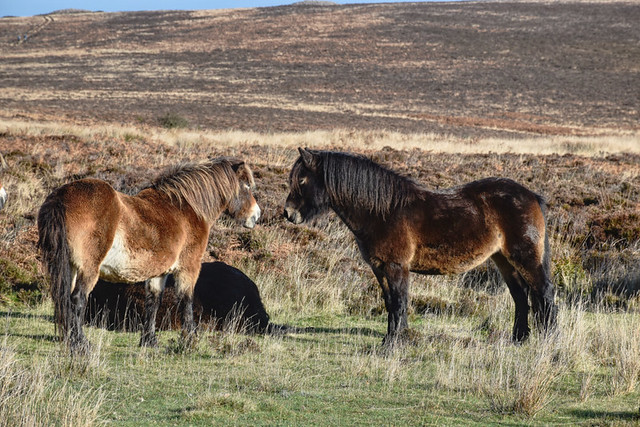
The sun’s rays pierced the forest’s skeletal canopy, its warmth causing misty spirals to dance across the Grand Western Canal’s glassy surface. It was magical. If the Lady of the Lake’s slender wrist emerged from the water, I would not have been in the slightest bit surprised.
Something caught my eye, the slightest hint of movement prompting me to look up from the crisp, frosty ground where I was hoping to see more examples of the rare phenomenon called hair ice. On the slope above the path, a young roe buck stood stock still, observing me with curiosity. In spring and summer, when the foliage was lush and lovely, I’d never have spotted him.

An icy wind pinched at my nose, cheeks, and earlobes, the only exposed parts of my flesh. A low, bright sun silhouetted two hikers enjoying a picnic on a grassy mound overlooking a golden sea of grasses and shrubs where Exmoor ponies with shaggy chestnut coats roamed freely. In one direction lay an endless panorama consisting of Somerset and Devon’s gently rolling hills. A spin on my heels, and this green and pleasant land was swapped for a view of the Bristol Channel’s slate grey water, looking cold and uninviting as it sloshed across the divide between England and Wales.
It is partly these contrasts that make winter walking in Britain such an enjoyable activity.

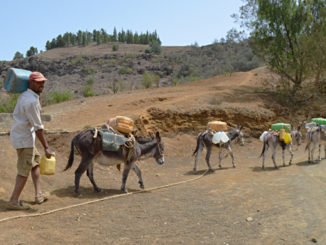

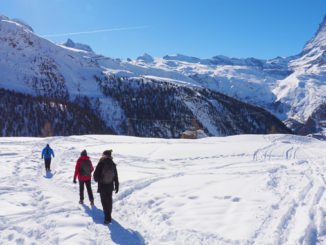
Be the first to comment